Growing tangerine variety "Unshiu" at home
Unshiu tangerines enjoy stable popularity. Their fruits are often found on grocery store shelves. They are distinguished by their sweet taste, rich aroma and absence of seeds. They are grown in Japan, China, Europe, Abkhazia and the Caucasus. The prevalence of the culture is determined not only by its tasty fruits, but also by its increased resistance to negative environmental factors.
Unshiu is suitable for growing not only in open ground and greenhouses, but also in a pot. This species develops faster than other tangerines and begins to bear fruit. It is undemanding to care, but it is important to follow the basic rules of agricultural technology.
Read on to learn how to grow Unshiu tangerine at home and how to distinguish it from other varieties.
Description and characteristics of the Unshiu variety
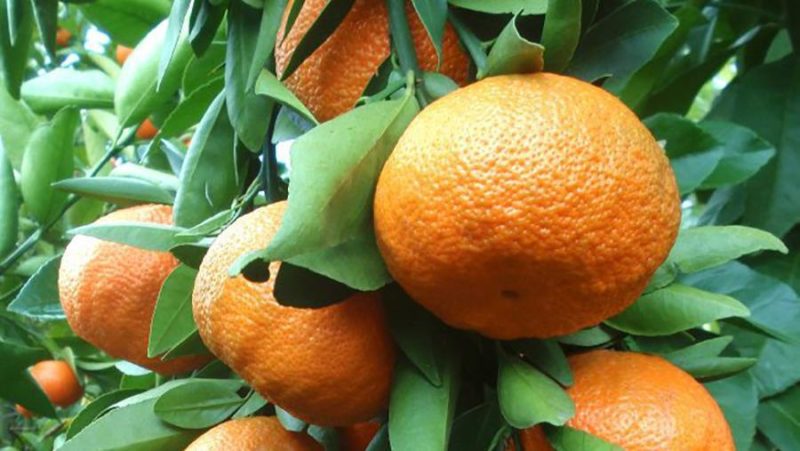
Unshiu is the so-called “real tangerine”. Its name literally means “seedless.”
The botanical species Unshiu includes a whole group of varieties. Plants may have some differences, which often causes disputes among gardeners. Despite this, there are a number of average characteristics characteristic of this group.
Origin story
Unshiu's homeland is China. However, it was in Japan that the variety became most widespread and from there began to spread to other countries of the world. This happened due to increased winter hardiness.The plant is grown in Azerbaijan and the Caucasus - the northernmost countries suitable for cultivating citrus fruits in open ground.
Breeders from Japan, China, Georgia and Europe worked on the first varieties of Unshiu mandarin. Now a huge number of varieties included in this group have been bred. Some of them are very different from each other.
Plant characteristics
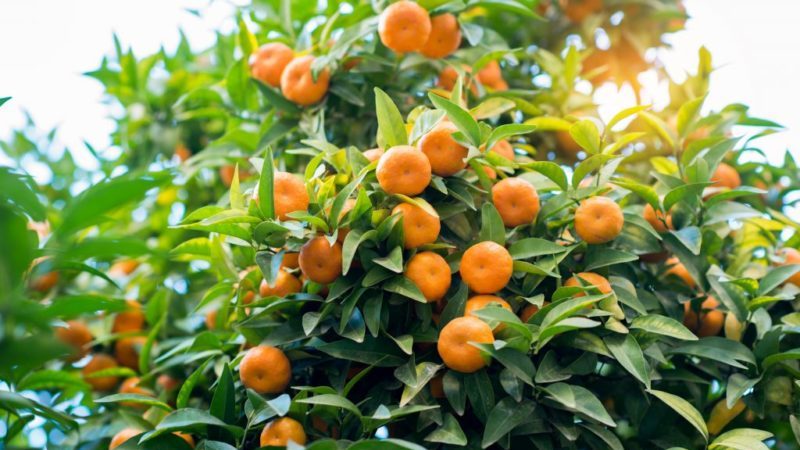
There is an average description of all varieties of the group:
- Trunk and branches. In open ground, the height of the plant varies between 2-2.5 m. At home, dwarf trees are grown, the size of which does not exceed 1.5 m. The tangerine branches are slightly drooping and thin. They are distinguished by the absence of thorns. The bark is dirty green in color. Old branches take on a brown tint. The plant produces many shoots.
- Leaves. The leaf blades have short thin petioles and an oval shape, pointed on both sides. They are thick and dense, dark green in color, have a leathery texture and a clearly visible central vein. They have a characteristic bitter aroma. The lifespan of one leaf is 2-4 years.
- Inflorescences. Consist of 5-6 pcs. miniature white flowers with 5 pointed petals. They have a rich sweetish aroma.
- Bloom. The tree blooms in May. Sometimes re-blooming occurs at the end of summer. Unshiu is a self-pollinating plant, which is why it does not form seeds. The first inflorescences appear on trees after 2 years.
- Root system. Powerful, spreading.
- Fruit. Round, flattened on top and bottom. The weight of each fruit varies between 70-100 g. The peel is orange, thin, does not fit tightly to the pulp and is easily separated from the fruit. The fruit consists of 10-12 segments. Does not contain seeds.The taste is sweet, with a slight sourness. The aroma is rich. The fruits will ripen by early November. The tree bears fruit for 4-5 years.
- Resistance to negative environmental factors. It is characterized by high frost resistance and the ability to withstand short cold spells down to –12°C. Insufficiently humid air and the lack of additional lighting will not be an obstacle to growing Unshiu group tangerines.
- Transportability. High.
Advantages and disadvantages of the variety
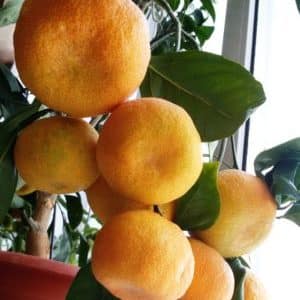
Unshiu is popular among gardeners all over the world. This is due to its advantages:
- attractive appearance of wood;
- good tolerability trimmings and haircuts;
- high yield rates;
- absence of seeds in fruits;
- resistance to lack of light;
- ability to survive drought;
- frost resistance;
- high taste characteristics;
- good transportability;
- active growth of shoots.
Mandarin also has disadvantages. These include:
- impossibility of generative reproduction;
- poor rooting of shoots;
- difficulties in care;
- demands on soil composition.
Growing Unshiu at home
Unshiu is ideal for growing at home. He will forgive some mistakes of novice gardeners and will not die at the first mistake.
When grown at home, the result is a dwarf tree. It is small in size but produces a good harvest.
Reproduction methods
Propagating the Unshiu mandarin is the most difficult part of growing it. Unshiu fruits do not have seeds, so it will not be possible to grow a tree in a generative way.
Unlike other citrus fruits, tangerines do not take root well. The chances that the seedling will take root are close to zero.Successful cases of this type of propagation (especially in the case of varietal tangerines) are considered an exception.
The only way to propagate Unshiu is by grafting it onto other citrus fruits. For this stalk grafted onto lemon or tangerine grown from seed. All leaves are cut off the rootstock, leaving only the trunk. The result is a full-fledged tangerine tree.
There are also some difficulties associated with vaccination. Mandarin takes a long time to get accustomed to other citrus fruits, and the procedure is not always successful.
The easiest way to get Unshiu is to buy a tree in a store. Not only successfully grafted, but also fruit-bearing trees go on sale.
Advice! Sometimes in markets and stores, Unshiu fruits contain its branches. They are also suitable for vaccinations.
Microclimate requirements
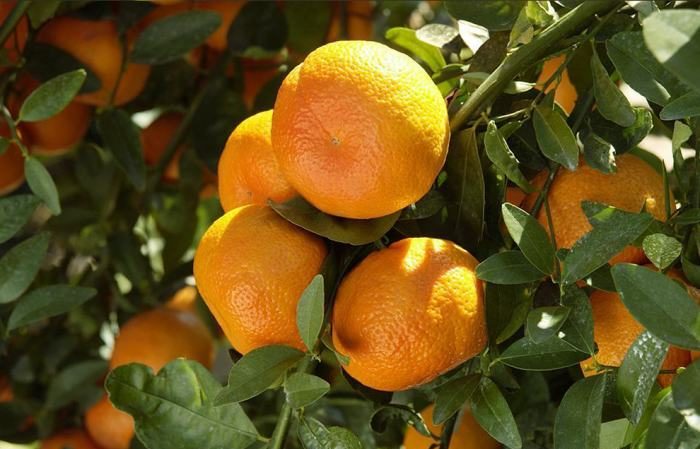
Mandarin will bear fruit only if the microclimate is optimal:
- Temperature. Young, non-blooming tangerine feels good at temperatures from +17 to +26°C. During flowering, room temperatures are kept within +17…+18°C. In winter, the temperature is reduced and maintained in the range from +8 to 12°C.
- Humidity. Mandarin is a moisture-loving plant. It is recommended to spray it daily with warm, settled water. In winter the air is especially dry. To normalize the humidity level, place containers of water or a humidifier near the pot. If there is a flow of hot air from the batteries to the lemon, then to protect the plant they make a barrier from a greenhouse film. Otherwise, the leaves of the tree will begin to dry out and become sick, and the likelihood of spider mite infection will increase.
- Lighting. Unshiu is undemanding to lighting. In the warm season, it is placed on a southern, eastern or western window sill.From 11 a.m. to 4 p.m., the window is covered with a translucent curtain, protecting the plant from direct sunlight. If the optimal temperature regime is ensured, the tangerine is dormant in winter and does not need additional lighting.
When growing tangerines on their own in the first 2 years, some gardeners do not change their care in winter, continuing to keep the plant warm, water it often and feed it. This is done for faster formation of shoots. In this case, in winter, you will have to illuminate the tree with fluorescent lamps placed at a distance of 20 cm from the pot for 12 hours a day.
After the first flowering, winter dormancy is mandatory for Unshiu, otherwise it will become sick and will not bear fruit.
Advice! If it is impossible to set the required temperature in the room in winter, then the tangerine is moved to a glazed balcony. The main thing is that the temperature on it does not drop below 0°C.
Soil and transplants
Unshiu is distinguished by abundant fruiting, but is very demanding on the composition of the soil. For this reason, the tree requires frequent replanting.
Before the first fruiting, the tree is replanted annually. Then the procedure is carried out no more than once every 2-3 years. For each transplant, take a container 5-6 cm larger than the previous one.
Replant the tangerine after the roots fill the entire pot. It is transferred to a new container along with a lump of earth, removing only the top part of the soil. The free space is filled with fresh soil mixture.
When the tree reaches the desired size, replanting is stopped. Instead, the top layer of soil is removed from the pot every year, replacing it with new soil.
Important! With each transplant, a layer of drainage is poured onto the bottom of the pot.
A store-bought universal soil mixture is not suitable for tangerines. It contains peat, which is unsuitable for growing citrus fruits. For young and adult plants, different options are used:
- turf – 2 parts;
- vermiculite – 1 part;
- humus – 1 part;
- coarse sand - 1 part.
When mixing ingredients for adult plants, use the same proportions, but add 3 parts of turf soil.
The ideal soil acidity for tangerine is 6.5-7. If the indicators are elevated, dry ash is added to the soil.
Advice! Citrus trees purchased from flower shops are usually planted in a peat soil mixture. It is recommended to replant them 1-2 months after purchase.
Features of care
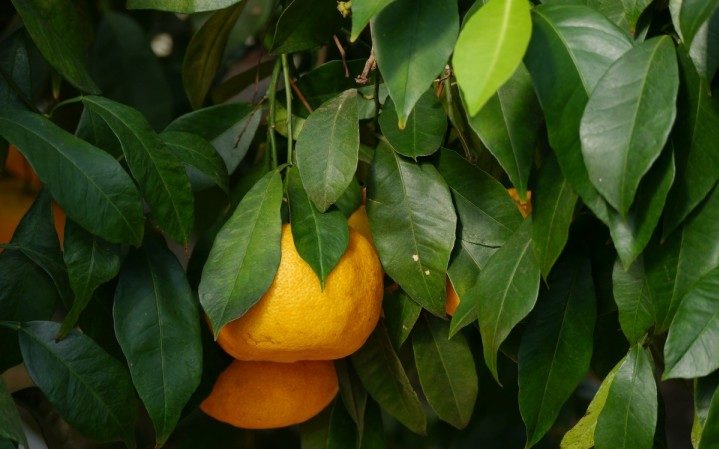
In order for the plant to bloom, bear fruit and not get sick, it is provided with regular care. The rules for growing Unshiu differ little from other varieties:
- Watering. In the warm season, tangerines are watered every morning with settled water at room temperature. In winter, moisten the soil 1-2 times a week, preventing it from drying out.
- Loosening. Once a week, loosen the soil using a regular fork.
- Feeding. The tree is fed once every two weeks. Alternate mineral and organic fertilizers without chlorine. It is important that the plant receives enough potassium. The necessary compositions are purchased at gardening stores or prepared independently (from manure, ash, food waste, etc.). At least a month should pass between transplanting the tangerine and the first feeding. In winter, the soil is not fertilized.
- Cleaning. Once a week, tangerine leaves are wiped with a damp cloth. Once a month the wood is washed in the shower.
- Formation. Unshiu tolerates pruning and shearing well. When the plant reaches the desired height, it is pinched. Do the same with side shoots.The tree is formed until branches of the 4th and 5th order with fruits are formed.
- Flowering and fruiting. Unshiu often blooms already 2 years after planting. In this case, all inflorescences are cut off. The same applies to fruits that appeared earlier than 3 years later.
In order not to water the tangerine every day, many gardeners organize bottom watering. To do this, pour water into the pot in which the plant stands.
note! If the leaves of Unshiu begin to turn yellow and the tree has stopped growing, it means it needs a transplant. Symptoms indicate that there are no nutrients left in the soil, and the roots have completely filled the container.
Unshiu varieties
The Unshiu group includes many varieties:
- Mandarin Owari-unshiu. Named after one of the Japanese provinces. It has the highest yields.
- Dzairai. The oldest variety is Unshiu. It has high frost resistance, but mediocre yield.
- Washo-unshiu. The main feature is early ripeness. Compared to other varieties of the group, it has reduced cold resistance.
- Ikeda. A small variety of Unshiu. Inferior in all respects to the previous options. It is rarely grown.
- Ikiriki. Another rare variety. Like the previous option, it is not characterized by high frost resistance or early fruiting.
The Unshiu group includes varieties bred by Soviet breeders. Of these, the most popular are Michurinets, Pioneer, and Sochi. All varieties presented are included in the Dzairai or Washo groups.
Conclusion
Unshiu is one of the largest groups of mandarins. It includes many varieties and is popular all over the world. The tree is not afraid of cold weather and can withstand frosts down to -12°C.At the same time, it is distinguished by high yield, absence of seeds and excellent taste of the fruit. This makes the variety especially popular among gardeners.
Unshiu is also suitable for growing in a pot. Tangerines bloom and bear fruit even in such conditions. When formed correctly, their dense crown has a spherical shape. Thanks to this, the tree looks decorative. Caring for a plant is not difficult, the main thing is to know the basic rules and nuances.